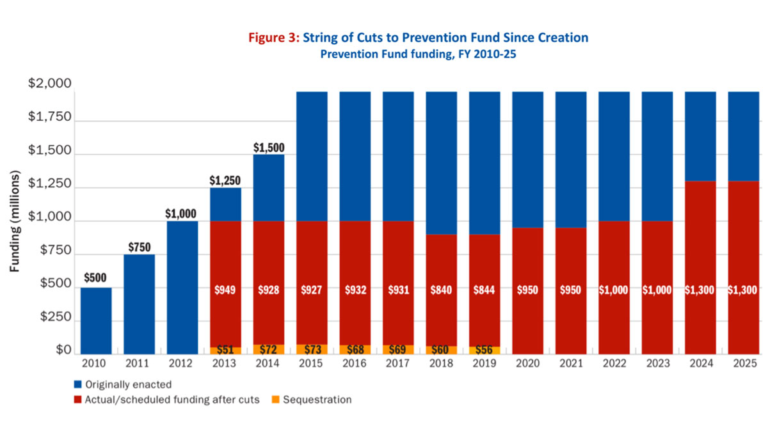Public Health Without Public Funds
There is growing consensus about the role and importance of public health among policymakers, but increasing federal monies have not followed.

Read Time: 2 minutes
Published:
In 2017, public health received only 2.5% of total health spending in the United States. Most of the federal funding for public health is managed by the Centers for Disease Control and Prevention (CDC), which distributes 50% of its funds to state and community partners. These partners lead programs that prevent diseases and injuries and prepare for disasters and major health emergencies. There is growing consensus about the role and importance of public health among policy makers, but increasing federal monies have not followed.
Approximately a tenth of the CDC’s budget is allocated to the Prevention and Public Health Fund. As the first fund dedicated to strengthening the public health system in the US, the fund was established to improve health and help restrain the rate of growth in private and public sector health care costs. Despite this mandate, the fund has faced repeated cuts (red bars) and reallocation to other agencies (orange bars) as depicted by the graph above.
There is a growing gap between funds that were originally enacted by the Patient Protection and Affordable Care Act (blue bars) and actual or scheduled funds established by the Bipartisan Budget Act (red bars). In the federal funding process, enacted funds are funds written into law while scheduled funds are actual monies distributed to relevant agencies.
In 2013, only 76% of enacted funding translated to actual funding. The proportion of actual funds to enacted funding dropped to 42% in 2018 and 2019. By 2025, only about 50% of enacted funds will be scheduled for actual disbursement to the CDC. Overall, the Prevention and Public Health Fund is projected to lose $1.35 billion over 10 years under the Bipartisan Budget Act.
Efforts to address issues like substance misuse, weather related emergencies, and services for a burgeoning elderly population are severely undermined by funds that lag behind growing public health needs. The median return on investment for public health interventions is also 14 to one in high-income countries like the US. With continued budget cuts, the Prevention Fund will be unable to deliver on its goals of improving health and reducing health care costs.
Databyte via Prevention and Public Health Fund. Centers for Disease Control and Prevention, July 13, 2018.



